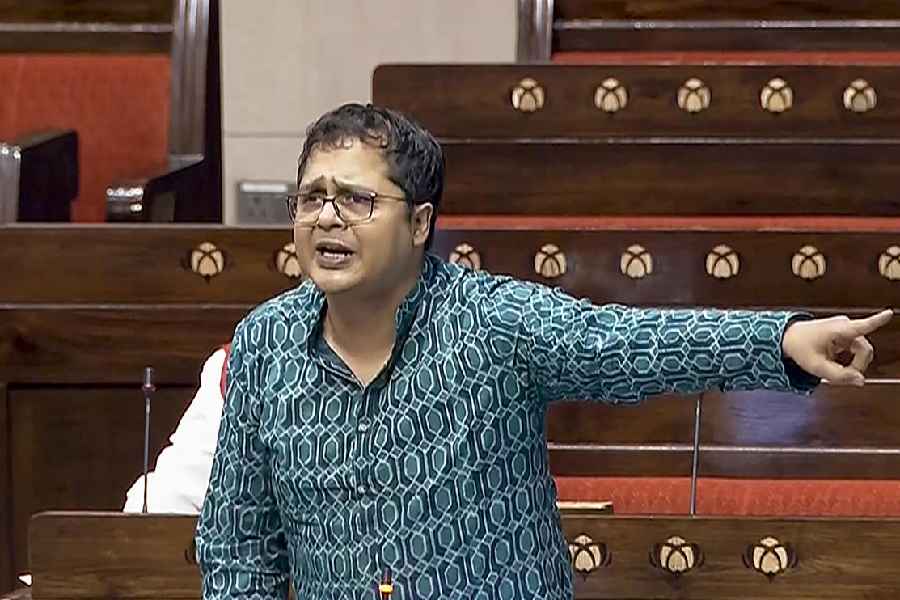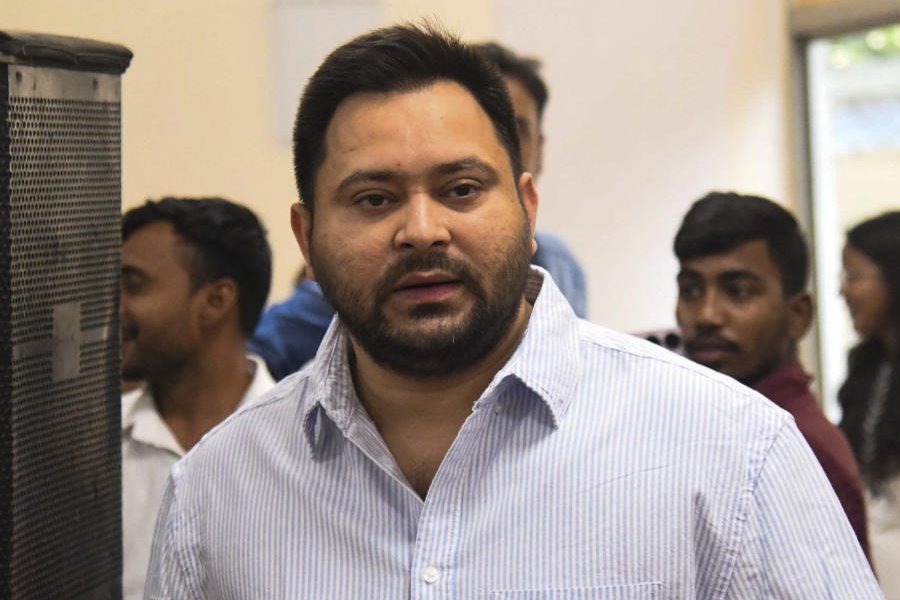
to the Cooch Behar airport (in picture), one of the many underutilised airports
in India
It's a bumpy ride on the uneven track leading to Sahnewal airport in Ludhiana. The approach road to the airport has a railway crossing, barely 20 feet from the main gate, where two security personnel anxiously wait for visitors. Make that "a" visitor - for there is only one this day.
The airport controller at Sahnewal - also known as Ludhiana airport - has to look into the smooth landing of Neeraj Saluja, managing director of SEL Manufacturing Industries. He has landed from Delhi in his seven-seat Beechcraft King Air C90. Some 40 employees, including security officers and anti-hijacking personnel, oversee the chartered flight.
But the airport has seen better days.
"There was a time when I used to get calls from people asking for tickets for the Air India or Kingfisher flights that flew from here. On Sundays, they used to fly at full capacity," says V.P. Jain, airport director, Airports Authority of India (AAI), Ludhiana. Then Kingfisher stopped operating from the Punjab city. Air India, which used to run flights thrice a week, stopped last year.
"Air India was notorious for its irregular flights. Non-conducive weather for landing or shortage of small aircraft was often the reason. As a result, people started flying from Chandigarh or Amritsar, or take a luxury bus to Delhi. Finally, Air India shut its Ludhiana office because of losses," Jain says.

Sahnewal airport in Ludhiana is one of the 34 "ghost airports" in the country - airports that are either non-operational or underutilised, where no carrier runs scheduled flights. And the government has spent over Rs 34.43 crore from 2009 to 2012 in maintaining them.
The ministry of civil aviation is currently busy with the drafting of the National Civil Aviation Policy, 2015, the first such exercise in Independent India. The draft report, slated to be released later this month, is expected to underline ways to revive non-operational airports.
From Malda and Cooch Behar in West Bengal to Warangal in Telengana and Jaisalmer in Rajasthan, the "ghost airports" have similar stories to narrate. The state-run AAI, which has 125 wholly-owned airports, has spent Rs 13 crore in the last financial year for the upkeep of 30 of its non-operational airports.
But, ironically, while these airports gasp for life, airport construction continues unabated. Last month, Prime Minister Narendra Modi announced four new airports for Bihar, just ahead of the Assembly polls. The previous government had announced 200 new airports and new ones are coming up in Chipi (Maharashtra), Karwar (Karnataka) and Tirupati (Andhra Pradesh), to name a few.
New airports are all fine, but where are the flights?
Take Jaisalmer airport. Built at an expense of Rs 80 crore, with parking bays for three 180-seater narrow-body jets, the airport is yet to see a single flight since its launch in 2013. However, S.K. Singh, director, AAI, Jodhpur Zone, maintains that "flight operations will start soon".
But airlines are sceptical. Jaisalmer, though a popular tourist destination, is in demand only during the four winter months in a year.
"Just building an airport won't make us fly to a destination. We have to look into the viability of the route," says a senior official at GoAir, speaking on condition of anonymity. "Airports need to have either a year-long demand or very high seasonal demand," he adds.
For Ludhiana to work, experts maintain, a carrier needs to sell at least 100 tickets a day at a value of not less than Rs 3,000, around the year.
"Most airlines don't have enough narrow-bodied aircraft to fly to Sahnewal. So we need to either expand the runway or encourage private carriers to opt for smaller aircraft," Jain says.
India's civil aviation industry is among the top 10 in the world with a market size of $16 billion. India has the potential to be number one globally by 2030, says a 2014 Indian aviation report by the Federation of Indian Chambers of Commerce and Industry (Ficci) and global consultancy KPMG. But "ghost airports" are white elephants that no one is ready to talk about. The ministry did not respond to repeated phone calls and emails by The Telegraph.
Aviation experts believe that "high costs" and "airport politics" are forcing airlines to bypass smaller towns and cities. The experts rue that many airports are announced by politicians without route feasibility studies.
"Airport profitability comes from traffic. And traffic in India is artificially suppressed because of policy apathy, high taxes and high costs," says Amber Dubey, partner and India head, aerospace and defence, KPMG.
Ludhiana is a case in point. State apathy, misguided calculations and exaggerated plans have deprived the citizens of a functional airport.
Sahnewal airport is situated on 130 acres of land and the runway is 1.5km long, which is unfit for broader aircraft. When the United Progressive Alliance government was in power, expansion plans for Sahnewal were announced. About 330 acres of land were needed for its expansion and land marking had started. But then the government changed at the Centre and the Greater Ludhiana Area Development Authority, entrusted with the work of land acquisition, couldn't acquire land for lack of funds.
In 2009, the Punjab government floated a Rs 1,800-crore international airport city project, to be developed at Machhiwara in Ludhiana by Bengal Aerotropolis Pvt. Ltd. Land too had been sanctioned for this but the project is yet to take off. The state government is now planning to construct a civil terminal at the Halwara Air Force Station in Ludhiana.
"We are happy with connectivity to just Delhi. We are not asking for flights to Mumbai or other metros," Saluja says. The textile magnet rues that several of his clients refuse to come to Ludhiana because there is no air connectivity.
"As a result, our marketing team sits in Delhi. We are losing out on business," Saluja adds.
Not surprisingly, Ludhiana's denizens are up in arms about the airport's dismal fate. A Facebook page, "No Airport, No Vote", was recently set up by disgruntled travellers and now boasts of over 1,500 members. The people are asking for a functional airport ahead of the Assembly elections in Punjab in 2017.
"It is rather shameful that an industrial hub such as Ludhiana doesn't have a functional airport. We have to go to either Chandigarh or Amritsar for a flight to Delhi," says Rajesh Jain, a local industrialist.
AAI owns and maintains 125 airports in the country of which only eight wholly-owned airports are earning profits, the Ficci-KMPG report states.
The other profitable ones - including the ones in Delhi, Mumbai, Hyderabad and Bangalore - are run as private-public enterprise.
"Airports need to be financially attractive for an operator. And not all airports are to be viable by aeronautical funding," says Debayan Sen, India practice head for the US-based consulting firm Landrum and Brown Worldwide.
Airports, he holds, can make profits through cargo business and turning the space into a retail hub. "Airports world-wide are developing office blocks on airport land. So real estate is a way of earning revenue," Sen adds.
But for the government, making airports in smaller cities financially viable - for the airport and for carriers - is a distant dream. Surat, Mysore, and Puducherry are other cities where airlines have reduced operations and are threatening to pull out.
"There is always big money to be made from building airports but whether they are successful for the purposes they were meant for is irrelevant for our politicians," says Sudhakar Reddy, president, Air Passengers Association of India.
Going to Puducherry from Chennai or from Bangalore to Mysore by road, Reddy adds, is a better option than taking a flight.
So book your bus tickets. The flight's been delayed - indefinitely, it seems.










